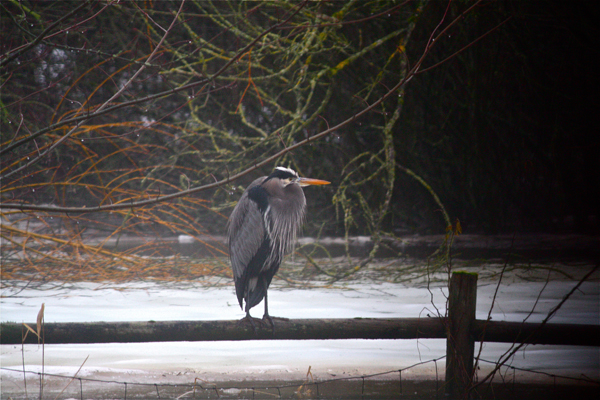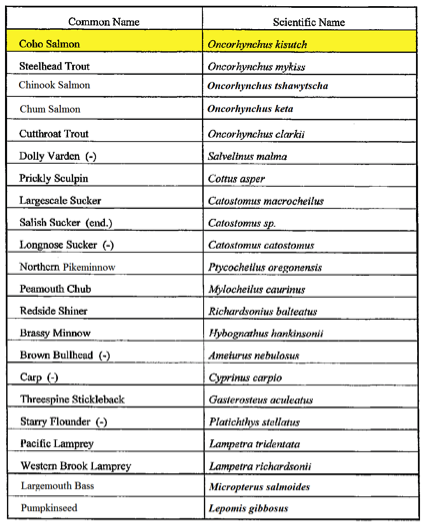The ecology
Unfortunately, extensive fish harvesting eventually led to the extinction of the Salmon River ‘s pink and chum salmon stocks. The Salmon River remains, however, the most productive stream for its size in the Lower Fraser Valley for coho and cutthroat trout. Steelhead and at least 12 other fish species make their home in the Salmon River. Even the chum have made their way back into the river with counts as high as 800 per year in the last decade.
The Department of Fisheries has declared the Salmon River as “an index river” for coho which prevents the reintroduction of pink, chum or other species.
Historically, the wild coho stocks of the Salmon River Watershed have shown much higher survival over their life cycle than stocks in other streams. Returning numbers, however, have dropped in recent years to 1,200 from highs of 8,000 to 10,000 in the 1980s.
The lower Salmon River and associated Fort Langley floodplains have also been an important migratory wetland for wildfowl.
The Salmon River Watershed was selected by Howard Parish as early as 1980 for special study in regard to Salmonid Enhancement. He identified the river as being one of the few remaining productive systems in the Lower Fraser Valley but as being on the “leading edge” of urban development and thus in danger of significant habitat degradation.
The watershed’s water quality and fish populations have been extensively studied by Westwater Research of UBC. In addition, the Salmon River was selected by the Fraser Basin Management Project (a coordinated effort by many levels of government to promote sustainability) in 1993 as one of its 6 special demonstration projects. A Watershed Management Plan was completed a few years later.
The Salmon River is also home to the endangered Salish Sucker. It is an inconspicuous fish that is confined to a small area in the Fraser Valley and northwestern Washington State.
The endangered Salish Sucker
The Salish sucker is a very rare species in B.C. and northwestern Washington, said Biologist Mike Pearson. “It’s an irreplaceable part of B.C.’s heritage. It’s relatively tolerant in terms of habitat and water quality, but you can think of it like the canary in the coal mine. It’s been here for thousands of years and if it’s gone it suggests there’s something seriously amiss. And that will affect everything else, including people.”
It has been widely reported that the federal government has made huge cuts to funding for environmental protection and slashed the budgets of the Department of Fisheries and Oceans and other federal agencies.
That leaves protection of watersheds, riparian areas and aquifers to citizen groups like the Salmon River Enhancement Society and other local environmental groups.
Fish species found in the Salmon River
Source: Giannico and Healy (1998)


